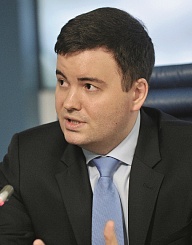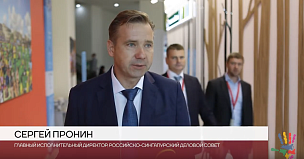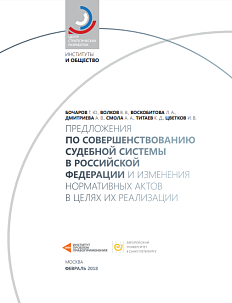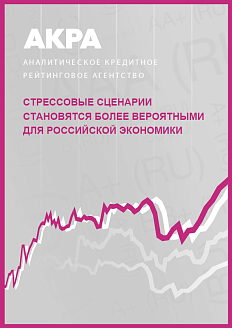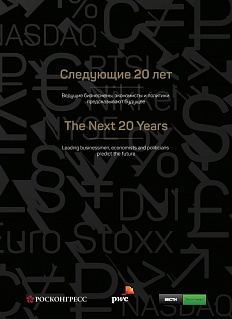The challenges facing the Russian economy over the next few years are complex and multifaceted. Defining the national identity and the information agenda with respect to our contribution to human development will be key tools in international competition across all spheres, from business to culture.
Much has been said recently about the dangers of the policy of isolating Russia. That is partly true, but the phenomenon also has another, positive side. People are talking about us more than ever before. The number of queries directly or indirectly related to the Made in Russia brand is growing exponentially, and despite all expectations, these questions are being asked in the context of people searching for information about culture, history, business, and social issues in general.
Given the new approaches to assessing the effectiveness and results of developing national brands, conducting endless image campaigns is no longer sufficient. Today, national branding means, first and foremost, a systematic approach, strategic planning, and results leading to structural changes in all areas.
Despite the public funds allocated, we have not yet managed to achieve these changes. According to 2017 research by the Institute of Applied Political Research on behalf of Made in Russia, state spending on direct and indirect marketing today is more than RUB 110 billion, not counting resources allocated to the Russia Today media corporation and regional marketing budgets.
Due to a lack of strategic planning and professional assessment, we are falling into an endless cycle of duplicating costs and redistributing functions. As a result, the budget loses billions of roubles every year, and the state is incapable of building a long-term strategy able to improve efficiency in marketing expenditure and secure growing returns for every rouble spent.
What Made in Russia means
The best practices, ideas, and projects, those that go beyond traditional assumptions, always suffer from stereotypical thinking. It is vital to comprehend that the Made in Russia brand ought to be understood not as a logo on a product package, but as the formation of a system that brings together all the factors for creating demand for the goods and services produced by Russian businesses. These include data aggregation, and providing services that combine the efforts of business and the state, intended to increase consumer patriotism and shape a national self-image. The brand logo, in this case, simply serves as one tool for contact with consumers and partners.
Within the national communications strategy, the brands role is to shape higher level values capable of unifying efforts by the Russian regions to build and promote their own identities, as well as work by federal executive agencies, state-owned corporations, and public organizations. That is the only way we can guarantee competitiveness within global information flows.
Export marketing
One important component of boosting the national Made in Russia brand is the consolidation of efforts by the state and business to formulate a single policy for export promotion. A strategy based on supporting a limited number of successful companies would be a mistake. Similarly mistaken would be any policies that force a limitation based on quality criteria, extent of localization, or success in domestic and foreign markets. Those sorts of measures are dictated by a rush to quickly achieve a result and meet key performance indicators, rather than shaping a fully functioning environment. That requires significantly more time.
The result of such strategic miscalculations is duplication of costs. The creation of catalogues of goods for export is one example. Websites, absolutely identical in content, made by both government bodies and corporations waste tens of millions in federal money. To solve this problem, it is important to consider export marketing as a government function, in order to guarantee a transparent system for management and monitoring.

Culture, tourism, and sport are closely interrelated and provide exclusive opportunities for government marketing both inside the country and abroad. Like other sectors, they suffer from a lack of coordination in government marketing. One example is the brilliantly organized competition to create and develop a tourism brand for Russia, which, nevertheless, has still not reached a logical conclusion. The final version of the logo, though it was created to meet high professional standards, has still not been approved. We must eliminate the subjective factor. The market for branding and design in Russia has been developing at a rapid pace for years now, and Russian experts are producing world-class products. The government ought to put more trust in their expert opinion, in their work, and in the depth of their understanding.
Human capital
The staffing problem continues to be one of Russias most pressing issues. Systemic work to develop human capital is not yet running smoothly. That requires building an institution of speakers and creating tools to promote Russian experts in particular sectors who are able to discuss and promote the interests and image of the country both at home and on the international stage. In our constant efforts to catch up, we are not paying enough attention to protecting, developing, and shaping the values that could build a national brand that we could call Russian Experts.
Regional development
Regional development is directly linked to human potential and local industries, and it is the foundation for building strong regional brands. Changing peoples way of thinking and attitude towards the region where they live is only possible when there are effective, working tools for communication between the regions population, the government, and the business world.
The job of the national brand is to supply the regions with expertise in registering, protecting, and capitalizing on regional brands, which, in turn, will facilitate the preservation of cultural self-sufficiency and the development of internal competition.
National quality system
Work to develop a national communications strategy must actively involve all responsible organizations and experts who are participating in building a national quality system. Tools created by the state must share a single goal, taking into account the need to develop businesss sense of responsibility towards consumers, employees responsibility towards employers, and the states responsibility towards its partners and those who use its products.
The role of the national Made in Russia brand is to serve as a tool for promoting the national quality system and its constituent parts in order to shape a new perception of both the workforce and the products (goods and services) it produces.
Cooperation and intergovernmental development
Communication, in the broad sense of the word, is soft power, advancing the interests of the state. Initiatives and projects that require interagency cooperation, or cooperation between the government and the business world, often go unfinished due to a chronic inability to reach agreement and find the correct approach to one problem or another. Equally, the division of power between federal executive agencies and state-owned corporations is not always effective or logical.
One possible solution to this problem could be to create a separate structure responsible for government marketing that would be a management and supervisory body in charge of the national communications strategy. Another option would be to bring in already existing structures which are neutral with respect to federal executive agencies and state organizations, structures which would be able to serve as an expert forum and a communications platform.
The creation of a national communications strategy and the «Made in Russia» brand is a unique opportunity to do work in a sector where systematic steps have never been taken before, where there are no complex, long-standing contradictions, and where there is a unique opportunity to build a working system from scratch. We can hope that success in this area will enable us to build effective tools that can work for the good of the Russian economy.
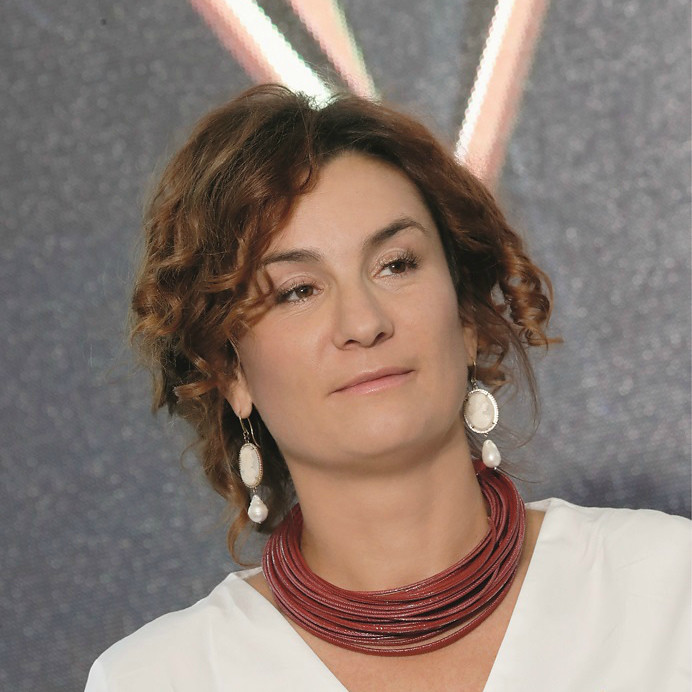 Russian animation is highly valued abroad. That is an undisputed fact. In the last five years alone, Russian animated films have won about 30 prizes at different international competitions. Popular culture, and the spell it casts, is an important soft power tool that can be used in synergy with different sectors. I am confident that this resource, the domestic animation industry, will increase the visibility of Russian products and their popularity. One example here is the initiative by the Russian Ministry of Industry and Trade to subsidize a portion of the licensing costs for manufacturers who want to use images from Russian animation. The percentage of products produced for export will be an important factor. And, I would point out, this kind of cooperation is beneficial to all sides: manufacturers products become more attractive, and studios benefit from the visibility of their characters.
Russian animation is highly valued abroad. That is an undisputed fact. In the last five years alone, Russian animated films have won about 30 prizes at different international competitions. Popular culture, and the spell it casts, is an important soft power tool that can be used in synergy with different sectors. I am confident that this resource, the domestic animation industry, will increase the visibility of Russian products and their popularity. One example here is the initiative by the Russian Ministry of Industry and Trade to subsidize a portion of the licensing costs for manufacturers who want to use images from Russian animation. The percentage of products produced for export will be an important factor. And, I would point out, this kind of cooperation is beneficial to all sides: manufacturers products become more attractive, and studios benefit from the visibility of their characters.
Yuliana Slashcheva, Chairman of the Board, Soyuzmultfilm Film Studio
 There are quite a lot of brands in Russia, but do we really know and value them? While aiming to produce and promote national goods and services abroad, it is also important to pay attention to regional brands both traditional brands and newcomers. These can be centuries-old handicrafts, tourist attractions, local food specialities, festivals, landscapes, and city points of interest. Quite often all this can be found in the outlands, reflecting values of local people and unique local culture. It is important to support development of such brands, as they contribute to the rich and integral image of Russia. This means, it is necessary to create good conditions for people and communities that strive to embody the unique character of their locations in the most comprehensive and attractive way. At the Foundation, we do this by providing grants, as well as educational and expert support. Having launched the Cultural Puzzle of Small Towns and Settlements Contest four years ago, we can see how the appearance of local brands improves the quality of peoples life, contributes to economic and cultural development, improving relations inside the community. As usual, this also contributes to growing interest from tourists, mass media, and expert society.
There are quite a lot of brands in Russia, but do we really know and value them? While aiming to produce and promote national goods and services abroad, it is also important to pay attention to regional brands both traditional brands and newcomers. These can be centuries-old handicrafts, tourist attractions, local food specialities, festivals, landscapes, and city points of interest. Quite often all this can be found in the outlands, reflecting values of local people and unique local culture. It is important to support development of such brands, as they contribute to the rich and integral image of Russia. This means, it is necessary to create good conditions for people and communities that strive to embody the unique character of their locations in the most comprehensive and attractive way. At the Foundation, we do this by providing grants, as well as educational and expert support. Having launched the Cultural Puzzle of Small Towns and Settlements Contest four years ago, we can see how the appearance of local brands improves the quality of peoples life, contributes to economic and cultural development, improving relations inside the community. As usual, this also contributes to growing interest from tourists, mass media, and expert society.Хenia Frank, Chairman of the Supervisory Board at Elena and Gennady Timchenko Charity Foundation


